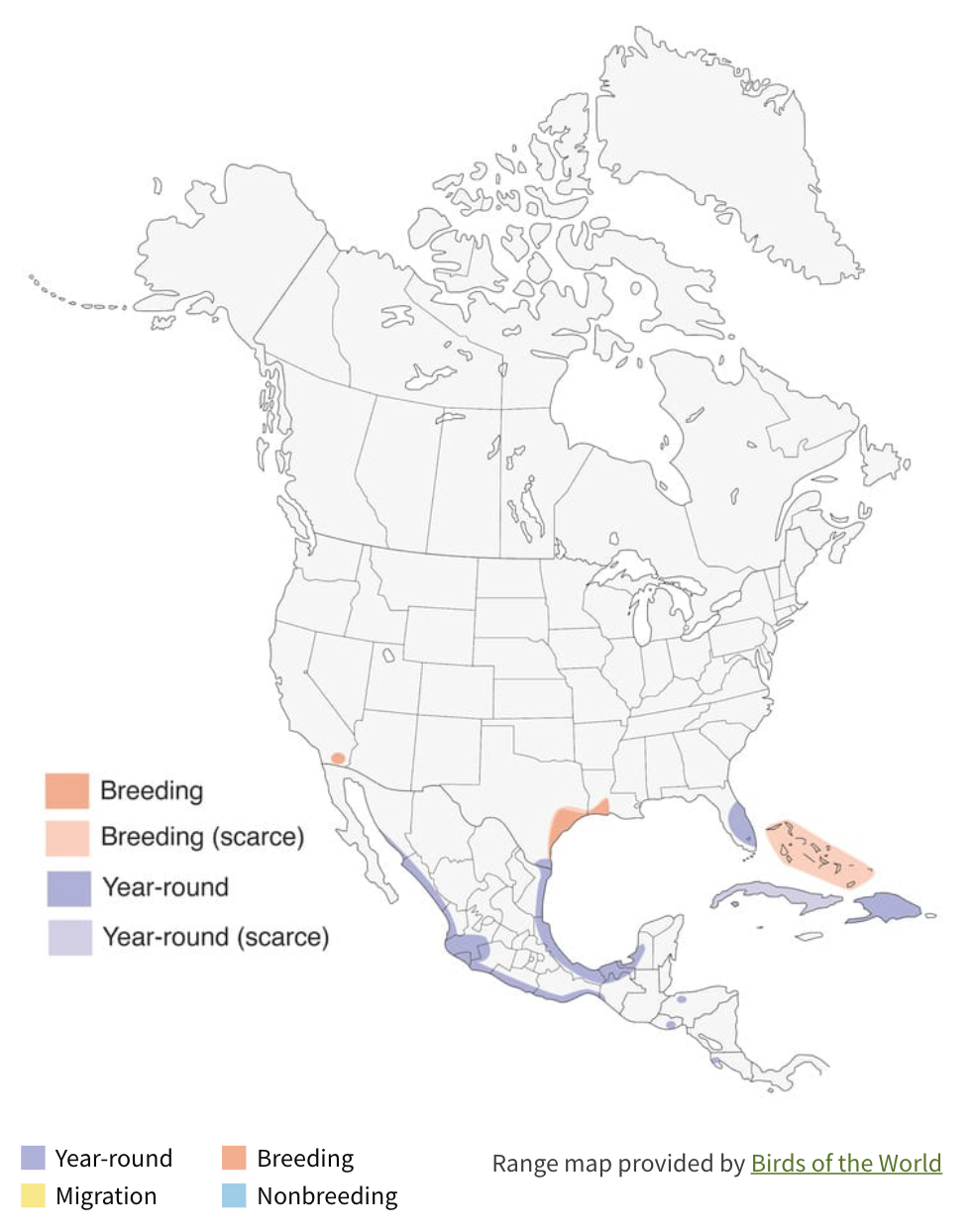Whistling-ducks are a distinctive group of about eight species of brightly colored, oddly-proportioned waterfowl. Black-bellied and Fulvous Whistling-ducks are found in the southern United States. Both species were formerly known as “tree ducks” since they often roost in trees. They look like a typical duck, but their lack of sexual dimorphism, relatively long-term pair bonds, and lack of complex pair-forming behavior more closely resembles geese or swans.
Fulvous Whistling-Duck
The Fulvous Whistling-Duck is one of the most widely distributed species of waterfowl in the world, occurring mostly in tropical and subtropical regions but also in temperate areas of the Americas, Africa, and Asia.
The Fulvous Whistling-Duck is a long-legged and long-necked creature with a mix of rich caramel-brown and black plumage. In the southern United States they are rarely found far from rice fields, which provide both food and an optimal water depth for these gangly birds to forage in.
This species nests on the ground, in marsh vegetation, and in artificial habitats such as shallowly-flooded rice fields. The raspy call is usually two-noted and, as with other whistling-ducks, is frequently heard at night. This species is perhaps the least studied of common North American waterfowl.
Sam Robbins wrote in “Wisconsin Birdlife” (1991) about a Fulvous Whistling-Duck sighting:
“Status. Accidental. One record.
William Mueller and Dennis Schwartz (Passenger Pigeon 52:88-90) were not expecting any unusual waterfowl when they stopped at Goose Pond in Columbia County on 3 July 1989. But there, before their eyes, not 75 yards away, swam a tawny-colored duck with an unusually long neck. Subsequently, when they saw the stranger fly, they noted all the distinctive features of a Fulvous Whistling-Duck. Quickly the word spread. Several birders had a good chance to observe the bird later that day. I was fortunate enough to join numerous other observers in viewing the wanderer on July 4, the bird having moved 4 miles to the northeast to Schoeneberg Marsh Waterfowl Production Area. Then the duck disappeared, as mysteriously as it had come.
No one can say with certainty that the Fulvous Whistling-Duck was blown northward by a 30 June Texas hurricane. But the brevity of the bird’s Wisconsin visit at a time of the year when most waterfowl are sedentary is certainly suggestive.”
As Sam mentioned, the word spread and later that day we were joined by Dorothy and Karl Legler, Al Shea and his wife, Allen Holzeuter and Kate Hartman, and Randy Hoffman and had an excellent look at this “tree duck” on the west pond. We were very pleased to see the first Fulvous Whistling-Duck reported in Wisconsin!
Since 1989, there has been one other Fulvous Whistling-Duck sighting in the state. Many birders saw this individual on the west side of Lake Waubesa, south of Madison on May 16, 2022.
Fulvous Whistling-Duck sighting south of Madison on May 16, 2022 (photo by Kaitlin Svabek).
Black-Bellied Whistling-Duck
The Black-bellied Whistling-Duck is a highly gregarious Neotropical duck that is restricted to the New World. Common south of the U.S., Black-bellied Whistling-Ducks occur in several southern states and are expanding northward. They nest primarily in natural cavities in trees but will readily use nest boxes. This species can also nest on the ground.
Distinguished from all other whistling-ducks by a red bill, pink feet, and white wing-patch, the Black-bellied is more arboreal than other whistling-ducks and vocal in flight, often repeating a whistling pe-che-che-ne.
Black-bellied Whistling-Duck sightings in Wisconsin (graphic by Sue Foote-Martin).
This species was first reported in Wisconsin in 1998, near the Lake Mills Wildlife Area in Jefferson County and at Horicon Marsh. Since then Black-bellied Whistling-ducks have been reported in 22 counties!
Black-bellied Whistling-Duck at Erstad Prairie (photo by Kevin McKown).
The first sighting in Columbia County was by Kevin McKown on July 1, 2023 at our Erstad Prairie! Kevin reported on eBird that he saw a Black-bellied Whistling-Duck “standing on the south shore of the pond.” Most birders now carry a cell phone and a camera, so it was easy to confirm this sighting with Kevin’s photo.
Erstad Prairie is adjacent to the Fish and Wildlife Service’s Schoeneberg Marsh Waterfowl Production Area. This is the only wetland complex in Wisconsin where both species of whistling-ducks have been reported.
We look forward to having a Black-bellied Whistling-Duck at Goose Pond and adding it to our bird list, which already includes 35 species of waterfowl (ducks, geese, and swans).
Many facts about whistling-ducks courtesy of the Cornell Lab of Ornithology’s All About Birds.
Learn more about the Fulvous Whistling-Duck and the Black-bellied Whistling-Duck.
Written by Mark and Susan Foote-Martin, Goose Pond Sanctuary resident managers
Cover image by Andy Reago & Chrissy McClarren. Several Black-Bellied Whistling Ducks are perched on a log and along a marshy shoreline in Scout County, Missouri, in May 2018.









